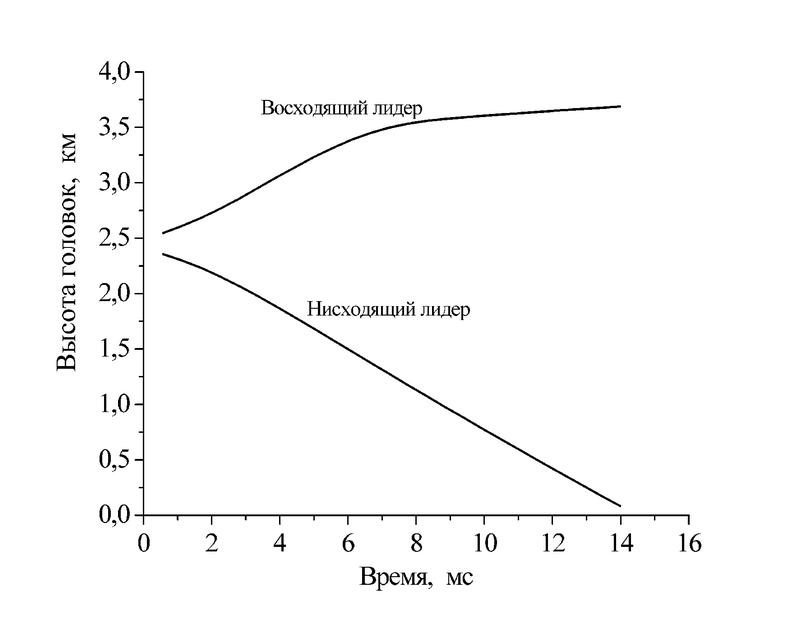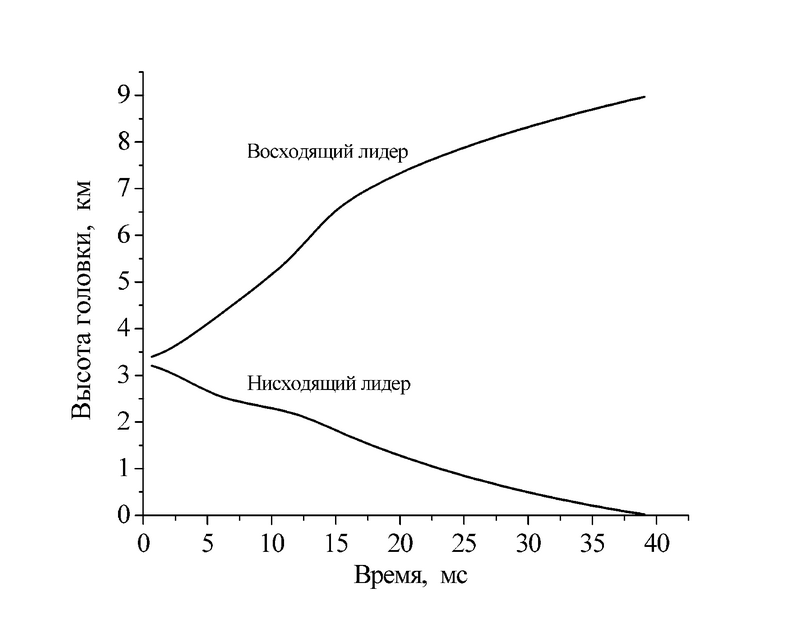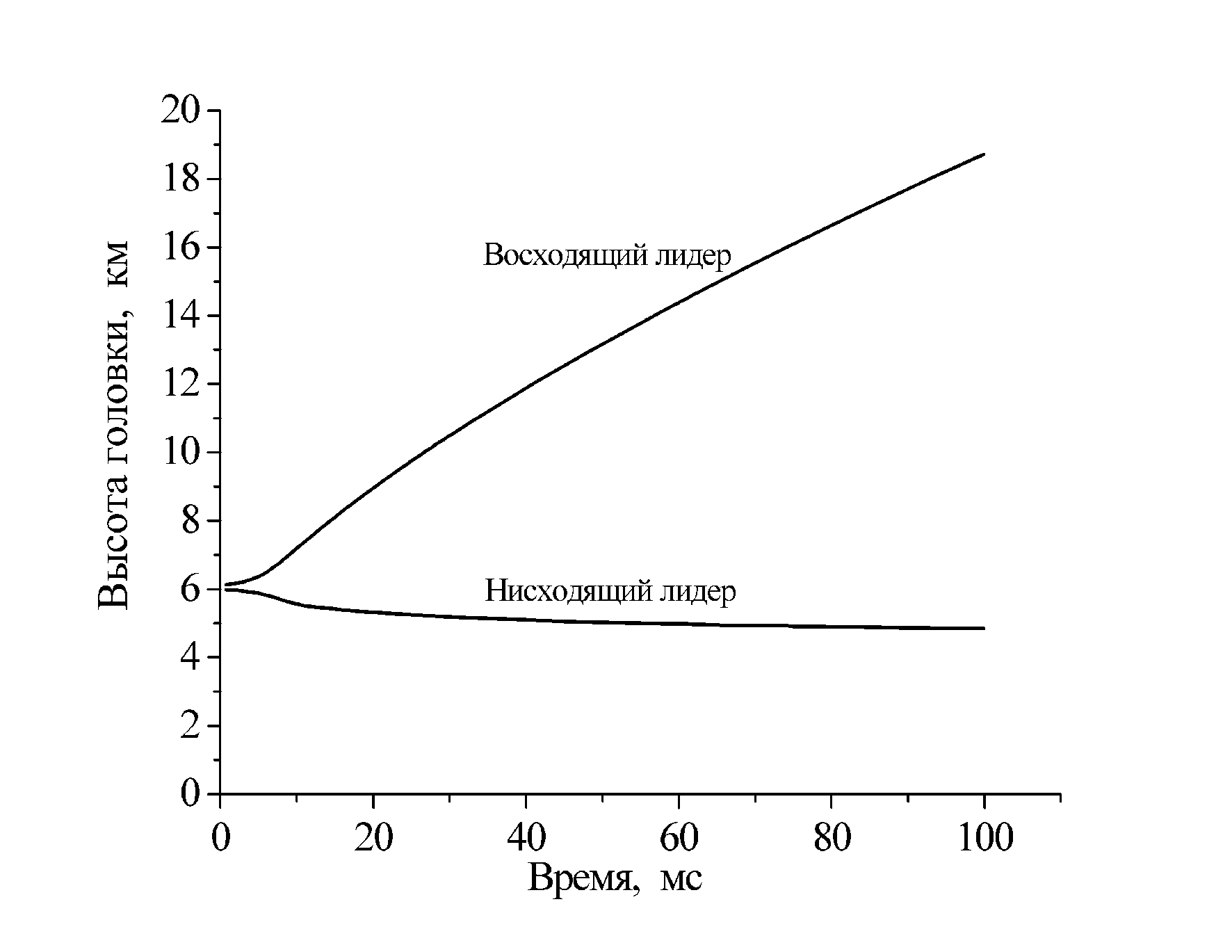This material is the 4rd publication from the series of articles by Eduard Meerovich Bazelyan "What is there, behind the clouds?".
In the calculation example, fig. 2 (in the 2nd part of the article) you can see the distribution of potential at a charge of a thunderstorm cell of 15 Cl. This is a very average charge, although it provided a potential relative to the ground of over 300 MV. As you move away from the thundercloud, the potential decreases. At an altitude of about 20 km, where blue jets most interesting for lightning protection appear, the voltage relative to the earth does not exceed 2.5 MV (a very modest figure even for laboratory sources), and the field strength is estimated at only 5 V / cm - too low for gas discharge processes in the air, whose density is still almost 10% of normal. There is nothing else left but to relate the reason for the penetration of any strong electric field into the upper atmosphere with the formation of traditional lightning.
Two fundamentally different mechanisms are possible. The first of them allows you to imagine the lightning channel as a radiating antenna. After the lightning channel contacts the ground, the so-called main stage of lightning begins, during which its charge is neutralized. The main stage current of tens to hundreds of kiloamperes becomes a source of strong electromagnetic radiation, which can briefly enhance the electric field in the far zone. For jets starting from a relatively moderate height, the second process is preferable - the amplification of the electric field by a charge that is transported beyond the cloud front by an ascending lightning channel.
It has already been noted above that in addition to the descending channel, at the start of the lightning, an ascending leader is born and spread almost simultaneously. It can rise high beyond the border of a thunderstorm cell. At a qualitative level, such a bipolar process lends itself to numerical modeling, especially since, according to existing theoretical concepts, the growth rate of leader channels depends little on the density of atmospheric air. The estimates presented below are of a purely qualitative nature, since the voltage drop along the channel length is not taken into account in the computer model. They are made for the dipole model of a uniformly charged thunderstorm cell with a charge of 15 C, shown fig. 2.

Fig. 7. The results of computer simulation of a bipolar discharge, launched at an altitude of 2.4 km.
There are two possible scenario. In the first version, the downward leader successfully reaches the surface of the ground and acquires its zero potential. If at the same time the rising leader did not manage to cross the zone of zero potential at an altitude of about 4.5 km, it is no longer able to rise above this level. The results of computer calculation reproduce this situation in Fig. 7. The downward leader started here from the altitude of 2.4 km and after 14 ms reached the surface of the ground, leaving the uprising leader at the altitude of 3.6 km, below the zone of zero potential. It is clear that it is not able to significantly strengthen the electric field at an altitude of tens of kilometers. A different situation corresponds to the start of lightning at the altitude of 3.25 km (Fig. 8). From here, the descending leader moved to the ground for about 40 ms, which allowed the uprising leader to rise to an altitude of almost 9 km, overcoming the area of zero potential. Now nothing prevents it from moving further up, transporting its charge.

Fig. 8. The results of computer simulation of a bipolar discharge, launched at the altitude of 3.25 km
Another picture is characteristic of a bipolar discharge, which started in the vicinity of the upper positively charged cell. Now the area of zero potential can not overcome the downward leader. Having descended to it, it actually stops moving. This does not interfere with the growth of the rising leader (Fig. 9). Within 100 ms in the considered example, its head rose to almost 20 km. This is exactly the height that is considered to be the starting point of the blue jets.

Fig. 9. The results of computer simulation of a bipolar discharge, launched at the altitude of 6 km
As you can see, the speed of the downward leader in the calculation is very weakly reduced in time. This is natural, since the voltage drop in the leader channels is not taken into account in the calculation model. If we continue to count up to 500 ms, the head of the ascending leader would have reached a height of 50 km, being equal in length to the blue middle-hand jet. It is characteristic that in the conditions under consideration the observer will not notice either a lightning strike into the ground or an intercloud discharge, because the channel of a downward leader stuck in the clouds with a weak current is unlikely to appear during the shooting.
Perceiving the aforesaid, I would like to assume that the jet is nothing more than an upward lightning that bursts into the operational space in the upper atmosphere. Do not forget that the charge of a thunderstorm cell of 15 Cl is far from the limit. Much more charged clouds are very likely. As for the reduced pressure in the upper atmosphere, it will lead to a decrease in the electric field in the leader’s channel, to an increase in its radius, and to a very significant increase in the length of the streamer zone in front of the channel head. All this is just observed during optical registrations of jets.
It is the forth part of the series of articles “What is there behind the clouds?”. To read the full material, you must register on the site.
See also:
- What is there, behind the clouds?
- What awaits the rising leader after the start
- Video of the webinar "Answers to questions of designers of lightning protection and grounding"
Related Articles:

